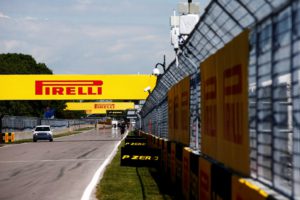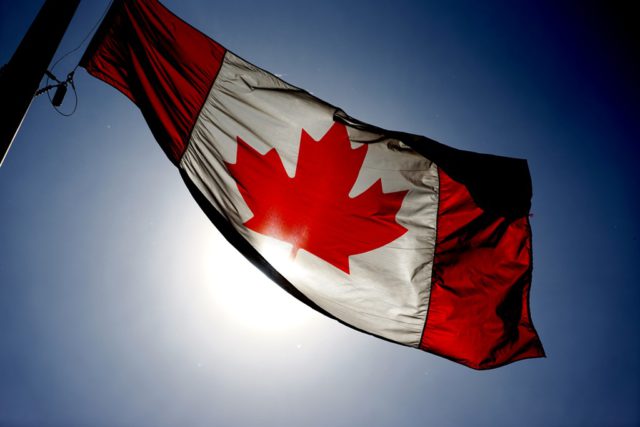The Canadian Grand prix is the seventh round of the 2018 Formula 1 world championship.
Total number of race laps: 70
Complete race distance: 305.270 kilometres (189.686 miles)
Pit lane speed limit: 80 kph (50 mph)
This 4.361-kilometer (2.710-mile), 14-turn circuit has hosted Formula One since 1978. Last year’s Canadian Grand Prix served as the venue’s 38th grand prix.
Rubens Barrichello holds the race lap record at Circuit Gilles Villeneuve (1:13.622), set in 2004 with Scuderia Ferrari.
Lewis Hamilton holds the qualifying lap record at Circuit Gilles Villeneuve (1:11.459), set last year in Q3 with Mercedes.

Famous for its tricky hairpin corners and long straights, Circuit Gilles Villeneuve is also popular for its “Wall of Champions”
Located at the end of a very long, high-speed straight, the track’s final chicane (turns 13-14) has ensnared many drivers over the years, most notably in 1999 when three world champions – Michael Schumacher, Jacques Villeneuve and Damon Hill – all crashed in this spot. “Wall of Champions” was born, with its nearly non-existent runoff area consisting of a small curb and a narrow strip of asphalt.
Circuit Gilles Villeneuve is one of four Formula One locations with ties to the Olympics. Its backstraight runs adjacent to the Olympic rowing basin used during the 1976 Summer Olympics. The Circuit de Barcelona – Catalunya was the site of the start/finish line for the road team time trial cycling event when Barcelona hosted the 1992 Summer Olympics. Sochi, site of the Russian Grand Prix, hosted the 2014 Winter Olympics. And the Magdalena Mixhuca Sports City, in which the Autodromo Hermanos Rodriguez is located, hosted numerous events during the 1968 Summer Olympics in Mexico City.
DYK? Circuit Gilles Villeneuve is located in Montreal’s Parc Jean-Drapeau. It carries the name of the Montreal mayor who twice served the city, from 1954 to 1957 and again from 1960 to 1986. Drapeau organized Expo 67, which was Canada’s main celebration during its centennial year. The circuit lies on Notre Dame Island, a man-made island in the St. Lawrence River that was built up for Expo 67. The neighbouring Saint Helen’s Island was artificially enlarged to accommodate the fairgrounds and still holds a prominent remnant from Expo 67 – the Biosphere, which can be seen regularly during television coverage of the Canadian Grand Prix.
During the course of the Canadian Grand Prix, lows will range from 12-13 degrees Celsius (54-56 degrees Fahrenheit) to highs of 21-23 degrees Celsius (69-74 degrees Fahrenheit)
Relative humidity ranges from 46 percent (comfortable) to 87 percent (very humid). The dewpoint varies from 6 degrees Celsius/43 degrees Fahrenheit (dry) to 17 degrees Celsius/63 degrees Fahrenheit (mildly humid). The dewpoint is rarely below 0 degrees Celsius/32 degrees Fahrenheit (dry) or above 20 degrees Celsius/69 degrees Fahrenheit (muggy). Typical wind speeds vary from 2-11 kph/1-7 mph (light air to light breeze), rarely exceeding 14 kph/9 mph (gentle breeze).

Toughest corner Turns 13 & 14, the final chicane
It’s very fast and unforgiving; the cars brake from 340km/h (211mph) to 150km/h (93mph) on entry and then accelerate up to 200km/h (125mph) by the exit. If the drivers are marginally off-line, or if they take too much kerb, they can end up hitting the outside barrier, known as the Wall of Champions.
Focus points The Baku City Circuit, scene of race four in 2018, has a long straight with a high top-speed, but the Circuit Gilles-Villeneuve represents the first genuine high-speed challenge of the season. The cars exceed 300km/h (186mph) on four occasions around the lap and all of the corners are relatively slow, so it’s a tough racetrack on brakes. The focus points are traction, top speed and braking.
Biggest challenge The walls. As was the case at Monaco last time out, the proximity of the barriers means the drivers have to be very precise with their driving inputs. Miss a braking point by two metres at 300km/h (186mph) and you risk ending up in the barrier.
Just listen to that crowd ??#CanadianGP #F1 pic.twitter.com/0eD4GYQnNS
— Formula 1 (@F1) June 5, 2018
Braking There are seven significant braking events around the lap
Four of them result in the cars shaving off more than 200km/h (124mph). The cars spend 19 per cent of the lap braking and the average deceleration is 4.3g.
Power The cars use 1.8kg of fuel per lap, which is high. This is also a very demanding circuit for the ERS, with lots of acceleration from low-speed and long periods of full throttle. The longest straight is 1.16km/0.721 miles, which is just 0.01km shorter than the longest straight of the year at the Shanghai International Circuit.
Aero Medium-to-low downforce, which is similar to Spa-Francorchamps. The engineers are forced to make a compromise between straight-line speed and braking stability. For high end-of-straight speeds you want as little downforce as possible, but to maximise braking and traction you need as much low-speed grip as possible.
LED LAPS #CANADIANGP ?? (current drivers)
352 Hamilton ?
180 Vettel ?
103 Alonso
27 Raikkonen
3 Ricciardo
1 Grosjean#F1FastFact #F1 pic.twitter.com/9kBfrXqSTy— Formula 1 (@F1) June 5, 2018


































